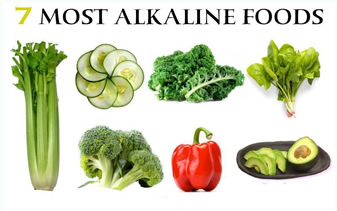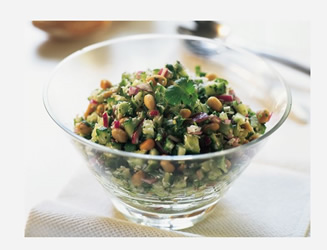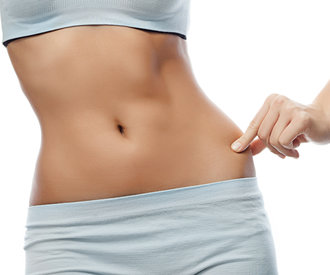In the past 20 years we have seen an incredible rise in the consumption of sugar among the populous in the US. Starting only about 100 years ago, we began eating processed and refined sugars, that are very high in carbohydrates. Before this time, we typically only ate foods that were naturally sweetened, such as those with fruit as part of their ingredients. As a result, it’s hardly surprising to find out that our bodies cannot typically deal with this level of sugar intake from artificially refined sources. This is known to cause all sorts of health problems, from diabetes, to obesity, to heart disease. Sugar also causes a series of highs and lows that can cause anxiety, mood swings and even exhaustion early in the day.
 Research has suggested in recent years that the decreased immunity caused by sugar is that it will actually absorb and then remove Vitamin C from our white blood cells. The more sugar we eat, the worse our immune response ultimately becomes. Another compounding factor, of course, is that sugar stimulates insulin production which causes your body to produce triglycerides. We know from hundreds of studies that triglycerides can cause stroke, heart disease and obesity as well. Sugar is also addictive, causing our bodies to crave it whenever we are without it for too long. As a result, controlling this craving is tantamount to a weight loss methodology in and of itself.
Research has suggested in recent years that the decreased immunity caused by sugar is that it will actually absorb and then remove Vitamin C from our white blood cells. The more sugar we eat, the worse our immune response ultimately becomes. Another compounding factor, of course, is that sugar stimulates insulin production which causes your body to produce triglycerides. We know from hundreds of studies that triglycerides can cause stroke, heart disease and obesity as well. Sugar is also addictive, causing our bodies to crave it whenever we are without it for too long. As a result, controlling this craving is tantamount to a weight loss methodology in and of itself.
Dr. Frank Lipman Talks about Sugars
Dr. Lipman is a physician with years of experience helping patients lose weight. Yet, he knows the difficulty we face when attempting to stop our sugar intake as well. Dr. Lipman has struggled himself with this “addiction” and knows first hand how difficult ti can be. One of the reasons he cites that causes the difficulty in cutting out sugars, is that our brains become adapted to their intake into our bodies. Sugar is not altogether dissimilar to many addictive drugs, such as alcohol or nicotine. The “reward” that it provides is much the same, and impacts our brains in the same manner as well.
The actual term “addiction” is defined as three separate elements: bingeing, withdrawal and cravings. Sugar meets all of these criteria. Recent research on the use of sugar and how it interacts with our body has shown that it causes craving, relapse, withdrawn and of course bingeing as we are all familiar with. This research cemented sugar as not only bad for us, but a highly addictive substance for out bodies.
Defying these feelings we have about how bad sugar for us is how we identify it as part of our diet. We associate sugar to something “sweet” or familiar which we have had in our past experienced. Whether that’s from parents who give it as a reward, or other causes, we associate sugar intake with good feelings. Our first food as infants is also milk, something that is contained in many candies such as chocolate. This makes this an even more powerful “comfort” food. We cannot be satisfied with our meal or food unless there’s something sweet at the end. We self medicate as children and as adults, in an effort to boost mood or energy. This is no different than any other addiction.
The takeaway we all need to have from this is that, sugar is addictive, it triggers the same reward pathways in our brain as many illegal substance. It harms your health, causes disease, and can even cause premature death over time. The harmful consequences are no different than fat, or other things we all know are harmful to our bodies.
Taking The Sugar Addiction By the Horns
The best way to break this addiction happens to be one of the more difficult. You want to have meals that are both regular in interval and often. For example, it’s better to have 5 smaller meals throughout the day than 3 larger ones. This helps reduce cravings for sweet things. Whole foods, protein, and smoothies (naturally sweet things) are ideal to help break through these cravings as well. Oftentimes something like a fruit yogurt for breakfast can be enough to sate even the biggest craving.
Exercise is another way to limit these cravings, as it helps to reduce tension and boost energy naturally. This cuts down on the demands the cravings make on your body. Other things you can add to your diet are vitamins and minerals such as D3 and Omega-3 Fatty Acids. These guidelines are not a cure all solution, wherein you will never crave sweets, but they can certainly help you to control the cravings more easily. What’s important to realize is that these feelings are beatable, and you can succeed!
 A recent study examined just this problem, finding that individuals who continue to engage in modified diet and exercise programs are more successful long term. As a result, most physicians and clinicians have advised people to maintain a “new lifestyle” rather than just a temporary fix down the road. If a person thinks about a change as something that will remain with them for “life” they are far less likely to fall into these patterns that typically lead to failure or going from “crash diet” to crash diet.
A recent study examined just this problem, finding that individuals who continue to engage in modified diet and exercise programs are more successful long term. As a result, most physicians and clinicians have advised people to maintain a “new lifestyle” rather than just a temporary fix down the road. If a person thinks about a change as something that will remain with them for “life” they are far less likely to fall into these patterns that typically lead to failure or going from “crash diet” to crash diet. After one month of starting the diet he later called “VB6”, he had lost 15 pounds. Can you imagine? That kind of weight loss is practically unheard of with any traditional diet or exercise program. Yet Bittman did it in a single month, and kept it off. After two months his cholesterol and blood sugar levels were normal again, and his sleep apnea which he struggled with for years had disappeared altogether. After four months he had lost almost all the weight. Bittman noted that he just wanted to “see what happened” and wasn’t expecting these sorts of results. Yet, once he cut out the processed foods and sodas (aka empty calories) he found himself feeling so much better. In doing so, he cut out at least 2000 calories from his diet, and wasn’t even as hungry as he used to be. “Processed” foods as he calls them, are no joke to our bodies. They contain a plethora of harmful fats, carbohydrates and calories.
After one month of starting the diet he later called “VB6”, he had lost 15 pounds. Can you imagine? That kind of weight loss is practically unheard of with any traditional diet or exercise program. Yet Bittman did it in a single month, and kept it off. After two months his cholesterol and blood sugar levels were normal again, and his sleep apnea which he struggled with for years had disappeared altogether. After four months he had lost almost all the weight. Bittman noted that he just wanted to “see what happened” and wasn’t expecting these sorts of results. Yet, once he cut out the processed foods and sodas (aka empty calories) he found himself feeling so much better. In doing so, he cut out at least 2000 calories from his diet, and wasn’t even as hungry as he used to be. “Processed” foods as he calls them, are no joke to our bodies. They contain a plethora of harmful fats, carbohydrates and calories. During each phase, besides phase three, the user continues to take HCG daily. This means at least 125 IUs of the hormone, in order for it to be truly effective. The HCG diet provides resounding results, with the average person losing between 30 to 40 pounds of fat over the course of the diet. It’s a tremendously effective treatment which is why it’s grown so popular over the years.
During each phase, besides phase three, the user continues to take HCG daily. This means at least 125 IUs of the hormone, in order for it to be truly effective. The HCG diet provides resounding results, with the average person losing between 30 to 40 pounds of fat over the course of the diet. It’s a tremendously effective treatment which is why it’s grown so popular over the years.
 One of the reasons the Ornish diet works is much the same as the reason the Paleo or “Caveman” diet works (or the Mediterranean diet for that matter). By removing unnatural and processed foods from our diet, we are able to avoid a lot of complex carbohydrates and fats that were not part of our evolutionary staple diet. Once they are removed, our body’s metabolism greatly increases, allowing us to more easily process the foods we eat, and also burn more fat. This has been known for a few years, perhaps even a decade or more, but these diets certainly can provide results that are positive given the overall goals underlying these food choices.
One of the reasons the Ornish diet works is much the same as the reason the Paleo or “Caveman” diet works (or the Mediterranean diet for that matter). By removing unnatural and processed foods from our diet, we are able to avoid a lot of complex carbohydrates and fats that were not part of our evolutionary staple diet. Once they are removed, our body’s metabolism greatly increases, allowing us to more easily process the foods we eat, and also burn more fat. This has been known for a few years, perhaps even a decade or more, but these diets certainly can provide results that are positive given the overall goals underlying these food choices. Many modern diseases experienced by mankind, such as autoimmune diseases or cardiovascular disease, were caused by this change in diet. This is what the Paleo diet is designed to remedy and correct. The goal here is not to duplicate the diet that a “caveman” would have had thousands of years ago. Rather it’s to create a diet that returns to these foods we had eaten in the past, but in a modern setting. There is no “one-size-fits-all” solution for this diet, and we do not advocate one whatsoever. Though some Paleo dieters do recommend stark changes and regression to this form of diet in an absolute sense, it’s not typically advisable to do so. Some Paleo dieters cannot imagine not eating dairy, and with particular changes to your diet it’s possible to include these foods into the program without violating the tenants.
Many modern diseases experienced by mankind, such as autoimmune diseases or cardiovascular disease, were caused by this change in diet. This is what the Paleo diet is designed to remedy and correct. The goal here is not to duplicate the diet that a “caveman” would have had thousands of years ago. Rather it’s to create a diet that returns to these foods we had eaten in the past, but in a modern setting. There is no “one-size-fits-all” solution for this diet, and we do not advocate one whatsoever. Though some Paleo dieters do recommend stark changes and regression to this form of diet in an absolute sense, it’s not typically advisable to do so. Some Paleo dieters cannot imagine not eating dairy, and with particular changes to your diet it’s possible to include these foods into the program without violating the tenants. The fact of the matter is, how loose your skin becomes once you lost weight is dependent on many factors including: the total amount of weight lost, how old you are (younger skin is more resilient), and how many times you’ve lost weight and gained it previously. The faster you lose weight the shorter the time your skin has to adapt to the change. There are many surgical options out there, such as a tummy tuck or a body life, but these are expensive and leave many scars. There are actually many natural options out there that can help instead. Using proven skin tightening treatments, and losing weight in a controlled manner can go a long way to help cut down on the folds of skin, though it’s not likely they will disappear entirely.
The fact of the matter is, how loose your skin becomes once you lost weight is dependent on many factors including: the total amount of weight lost, how old you are (younger skin is more resilient), and how many times you’ve lost weight and gained it previously. The faster you lose weight the shorter the time your skin has to adapt to the change. There are many surgical options out there, such as a tummy tuck or a body life, but these are expensive and leave many scars. There are actually many natural options out there that can help instead. Using proven skin tightening treatments, and losing weight in a controlled manner can go a long way to help cut down on the folds of skin, though it’s not likely they will disappear entirely.